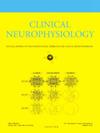Heart rate variability-based detection of epileptic seizures: Machine learning analysis and characterization of discriminant metrics
IF 3.7
3区 医学
Q1 CLINICAL NEUROLOGY
引用次数: 0
Abstract
Objective
We aimed to determine the most suitable cardiac metrics and machine learning algorithms (MLa) for an electrocardiography-based seizure detection device.
Methods
In a multicenter, prospective study of adult inpatients, with limited physical activity, 24-hour video-electroencephalogram recordings including ≥ 1 seizure were analyzed. Heart Rate (HR) and Heart Rate Variability (HRV) metrics were calculated continuously from the corresponding electrocardiogram. HR and HRV time series were segmented into 5-min epochs. MLa were used to classify the epochs as containing seizures or not for the whole dataset; then for convulsive and nonconvulsive seizures only, without focusing on individual results. The sensitivity, specificity and False Alarm Rate (FAR) were calculated.
Results
We included 129 patients and 313 seizures (255 nonconvulsive). The most discriminant metrics were the signal quality, maximum cardiac sympathetic index, maximum heart rate, and minimum high frequency variability index. The sensitivity, specificity and FAR were respectively 94%, 89% and 0.6 for convulsive seizures (extremely randomized trees), and 83%, 82% and 1.13 for nonconvulsive seizures (random forest).
Conclusions
In the largest unselected patient cohort study of this topic to date, seizure detection with ML analyses of cardiac metrics provides good results – even for nonconvulsive seizures.
Significance
The high FAR suggests to combine HR and HRV analysis with other metrics to increase specificity.
基于心率变异性的癫痫发作检测:判别度量的机器学习分析和表征
目的:为基于心电图的癫痫检测设备确定最合适的心脏指标和机器学习算法(MLa)。方法在一项多中心前瞻性研究中,对体力活动受限的成年住院患者进行24小时脑电图视频记录,包括≥1次癫痫发作。从相应的心电图连续计算心率(HR)和心率变异性(HRV)指标。HR和HRV时间序列被分割为5分钟的时期。使用MLa对整个数据集进行包含癫痫发作或不包含癫痫发作的时代分类;然后只针对惊厥和非惊厥发作,而不关注个人结果。计算灵敏度、特异度和虚警率(FAR)。结果129例患者,313例癫痫发作(255例非惊厥)。最具判别性的指标是信号质量、最大心脏交感指数、最大心率和最小高频变异性指数。惊厥发作(极端随机树)的敏感性、特异性和FAR分别为94%、89%和0.6,非惊厥发作(随机林)的敏感性、特异性和FAR分别为83%、82%和1.13。结论:在迄今为止该主题的最大的未选择患者队列研究中,使用心脏指标的ML分析进行癫痫检测提供了良好的结果-即使是非惊厥性癫痫发作。意义高FAR提示将HR和HRV分析与其他指标结合以增加特异性。
本文章由计算机程序翻译,如有差异,请以英文原文为准。
求助全文
约1分钟内获得全文
求助全文
来源期刊

Clinical Neurophysiology
医学-临床神经学
CiteScore
8.70
自引率
6.40%
发文量
932
审稿时长
59 days
期刊介绍:
As of January 1999, The journal Electroencephalography and Clinical Neurophysiology, and its two sections Electromyography and Motor Control and Evoked Potentials have amalgamated to become this journal - Clinical Neurophysiology.
Clinical Neurophysiology is the official journal of the International Federation of Clinical Neurophysiology, the Brazilian Society of Clinical Neurophysiology, the Czech Society of Clinical Neurophysiology, the Italian Clinical Neurophysiology Society and the International Society of Intraoperative Neurophysiology.The journal is dedicated to fostering research and disseminating information on all aspects of both normal and abnormal functioning of the nervous system. The key aim of the publication is to disseminate scholarly reports on the pathophysiology underlying diseases of the central and peripheral nervous system of human patients. Clinical trials that use neurophysiological measures to document change are encouraged, as are manuscripts reporting data on integrated neuroimaging of central nervous function including, but not limited to, functional MRI, MEG, EEG, PET and other neuroimaging modalities.
 求助内容:
求助内容: 应助结果提醒方式:
应助结果提醒方式:


